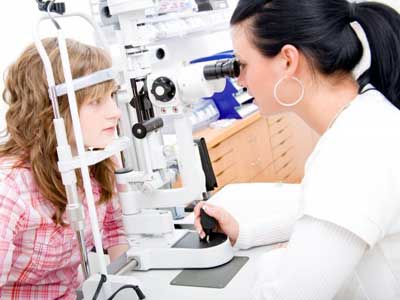When might a child need glasses? There are signs that may indicate vision problems, but parents should be proactive in having children properly examined.
The American Optometric Association recommends that children receive an eye exam by six months of age, then at least once between the ages of three and five and annually thereafter through the age of 18, especially if the child is considered at high risk for vision problems due to family history, prematurity, central nervous system dysfunction or other factors.
Children can develop problems like nearsightedness or farsightedness in their early school years. “If there is a strong family history of nearsightedness, then the child is more likely to need glasses around the same age his or her parents did,” says Dr Lisa Abrams, a pediatric ophthalmologist.
Visual demands increase as children progress through school. If vision problems are not detected and corrected, it can be difficult for them to read the small print in textbooks, keep up with studying, and other tasks. Some medical experts believe vision screenings offered at school or a paediatrician’s office may not pick up on certain things a comprehensive dilated eye exam from an eye specialist can detect, further emphasizing the importance of an annual exam. Even if you have 20/20 eyesight, you could still have a vision problem.
Parents should be aware of signs that a child may need glasses. Here are the most common ones:
1. Squinting at distant objects or writing
2. Holding reading materials very close to the face
3. Frequent headaches
4. Head tilting

















Related Items
People with children and grandchildren are happier
Top seven tips for parents of children with asthma
How to take care of children with COVID-19 symptoms?